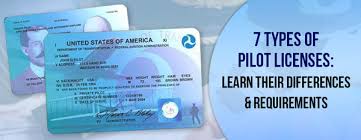In the vast expanse of the sky, where clouds dance and winds whisper, there exists a breed of professionals whose mastery lies in the art of flight: Pilot Commercial License . These individuals, entrusted with the safety and efficiency of air travel, play a pivotal role in the modern world’s transportation system. From the pioneering days of aviation to the technologically advanced cockpits of today, the role of pilots has evolved significantly, reflecting both the advancements in technology and the enduring spirit of adventure inherent in human nature.
A Legacy of Pioneers
The history of aviation is intertwined with the daring exploits of pioneering aviators who paved the way for modern flight. From the Wright brothers’ first powered flight in 1903 to Charles Lindbergh’s solo transatlantic crossing in 1927, these early aviators embodied the courage and innovation that defined the era. Pilots of this period faced immense challenges, often flying rudimentary aircraft with little more than instinct and intuition to guide them. Yet, their perseverance laid the foundation for the development of commercial aviation and the role of the pilot as we know it today.
The Rise of Commercial Aviation
The dawn of commercial aviation in the early 20th century heralded a new era of transportation, one in which air travel became accessible to the masses. With the introduction of passenger airlines and scheduled flights, the demand for skilled pilots grew exponentially. These pilots were not only responsible for safely operating aircraft but also for ensuring the comfort and satisfaction of their passengers. As air travel became more widespread, so too did the need for rigorous training and certification standards to uphold safety and professionalism within the industry.
Modern Challenges and Innovations
In today’s fast-paced world, pilots face a myriad of challenges unique to the 21st century. Advancements in technology have revolutionized the way aircraft are operated, with sophisticated avionics systems and automation reshaping the cockpit environment. While these innovations have undoubtedly enhanced safety and efficiency, they have also necessitated a new set of skills for pilots to master. From understanding complex computer systems to adapting to rapidly changing weather conditions, today’s pilots must possess a diverse skill set to navigate the skies with confidence.
